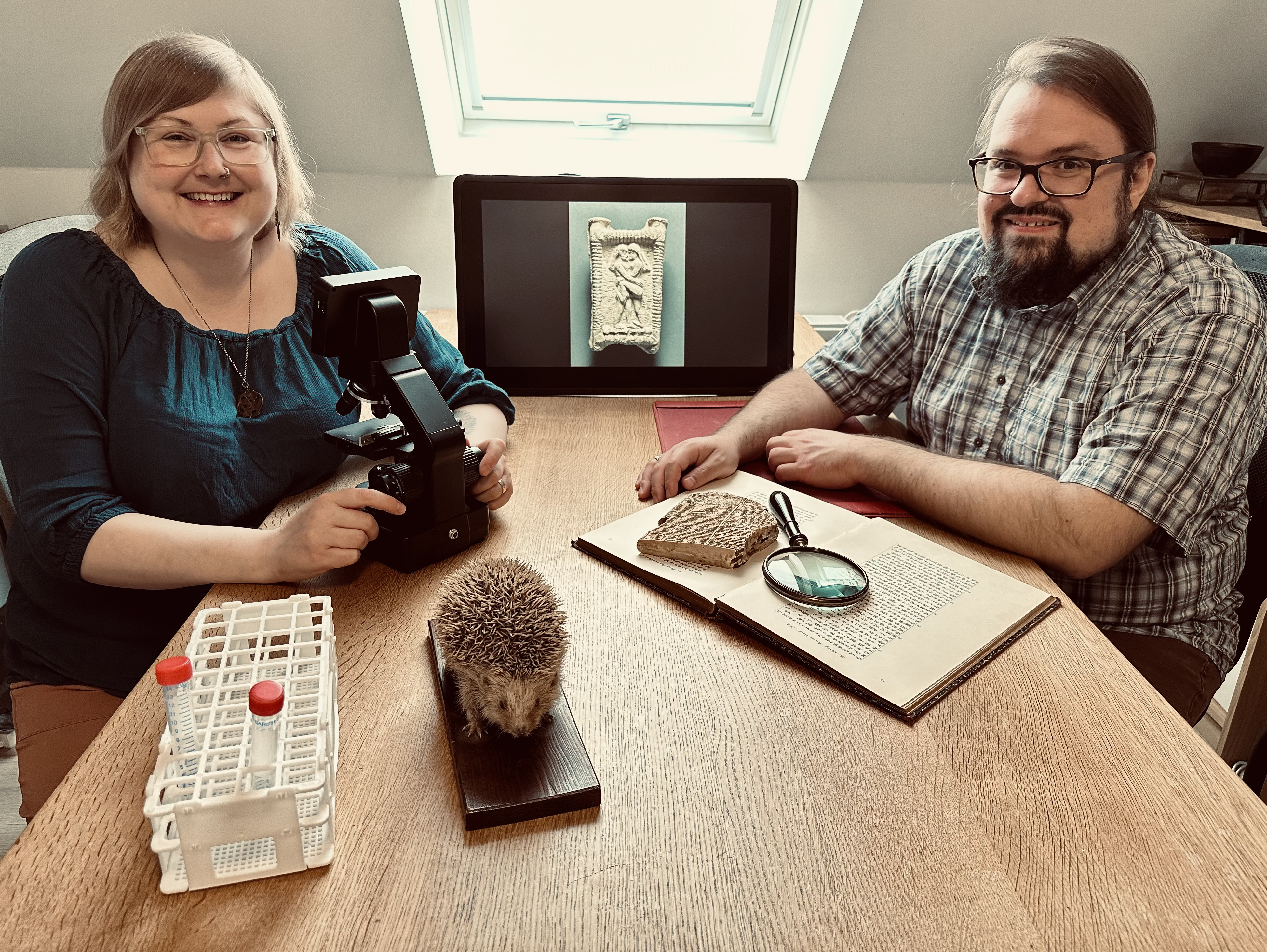News
The world’s first kiss? WildCRU research published in Science
Animal behaviour is a central theme of the research done at WildCRU. The majority with the focus on behavioural ecology in relation to the conservation of wildlife.
However, contributing with her knowledge on genetics, behavioural ecology, and pathogens, WildCRU member Dr Sophie Lund Rasmussen co-authored a “Perspective” just published in Science discussing the ancient history of kissing and its role in disease transmission.
Surprisingly, apart from hedgehogs and wildlife conservation, Sophie also has a keen interest in history and archaeology and happens to be married to Assyriologist Dr Troels Pank Arbøll of Department of Cross-Cultural and Regional Studies at University of Copenhagen, with whom she wrote the piece.
Drawing on a wide range of written sources from the earliest Mesopotamian societies, their research discusses how kissing was already a well-established practice 4,500 years ago in the Middle East, moving the earliest documentation for kissing back 1,000 years compared to what was previously acknowledged in the scientific community.
The Perspective describes how research suggests that romantic-sexual kissing evolved for the purposes of evaluating aspects of a potential mate’s suitability through chemical cues communicated in saliva or breath, mediating feelings of attachment, and facilitating sexual arousal. It also describes how studies on bonobos and chimpanzees, the closest living relatives to humans, have shown that both species engage in kissing, which may suggest that the practice of kissing is a fundamental behaviour in humans, explaining why it can be found across most cultures.
Since kissing was commonly practiced in ancient times, it potentially played an unintentional role throughout history in facilitating the transfer of orally transmitted microorganisms, such as herpes simplex virus 1 (HSV-1), hepatitis B, Epstein Barr virus, human parvovirus B19, or the archaeon Methanobrevibacter oralis, detected in ancient hominin remains. The article concludes that if the practice of kissing was widespread and well-established in a range of ancient societies, the effect of kissing as an unintentional tool for pathogen transmission must likely have been more or less constant.
This Science publication is indicative of the obvious benefits of interdisciplinary research approaches, for which WildCRU has always been a strong advocate.
You can read the Perspective here: www.science.org/doi/10.1126/science.adf0512
Troels Pank Arbøll and Sophie Lund Rasmussen 2023. The ancient history of kissing. Science vol. 380, issue 6646.
-
 Sophie and Troels Pank Arboll
Sophie and Troels Pank Arboll





